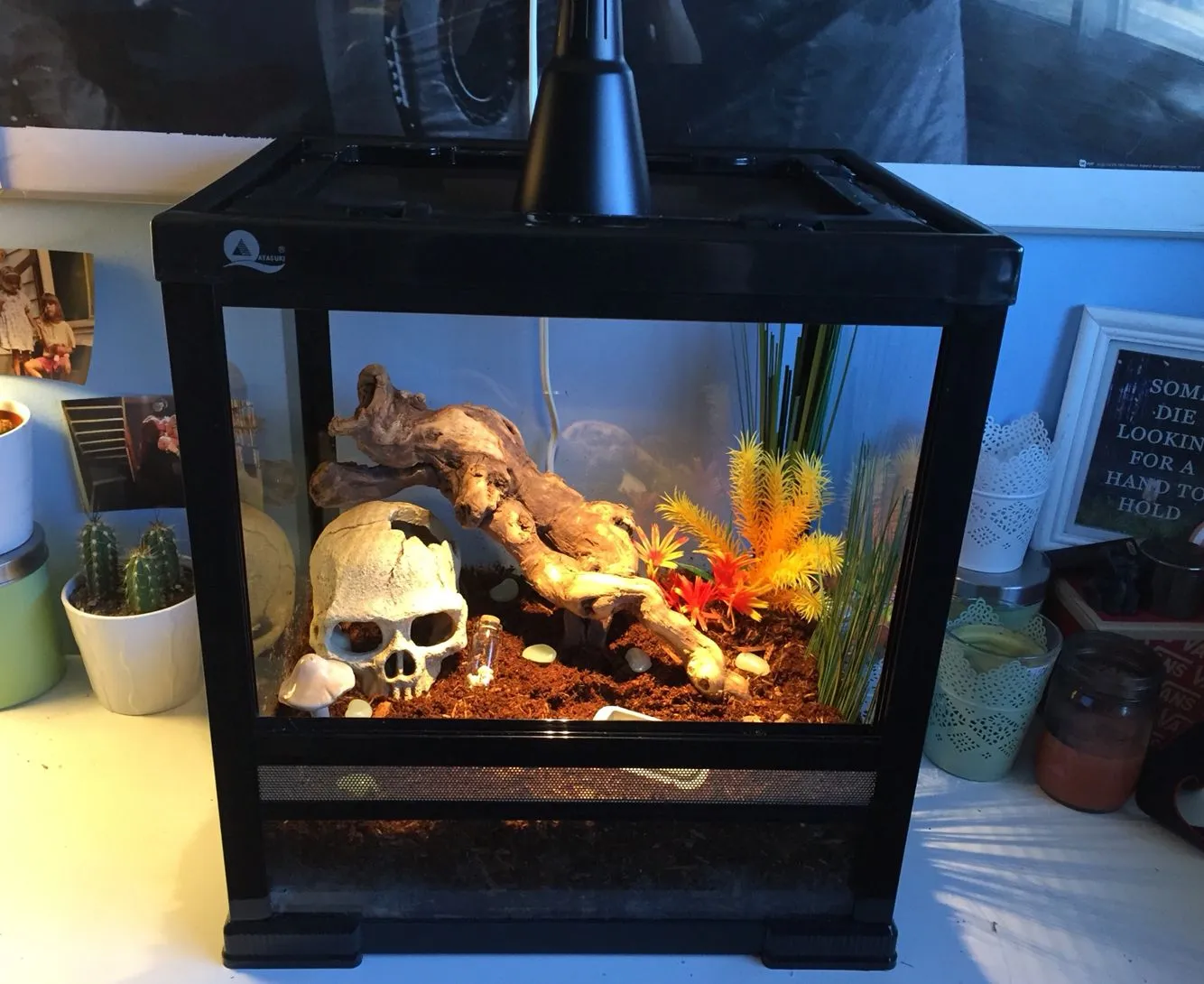Choosing the Best Tarantula Enclosures
Selecting the right enclosure for your tarantula is crucial for its health, happiness, and overall well-being. A well-chosen enclosure provides a safe and stimulating environment that mimics the tarantula’s natural habitat. It allows for proper temperature and humidity regulation, facilitates easy cleaning, and offers a secure space to prevent escapes. In this guide, we’ll delve into the key factors to consider when choosing the best tarantula enclosures, including size, materials, ventilation, and essential features, culminating in our top 5 picks for optimal tarantula habitats. This will ensure your eight-legged friend thrives in its new home.
Size Matters for Tarantula Enclosures
The size of your tarantula enclosure is one of the most critical factors to consider. A habitat that is too small can restrict movement and lead to stress, while one that is too large can make it difficult for the tarantula to find food and feel secure. The enclosure size should be proportional to the tarantula’s size, considering both its leg span and body length. A good rule of thumb is to provide an enclosure that is at least twice the tarantula’s leg span in width and length, and tall enough to allow for appropriate substrate depth and climbing space, depending on the species. This allows for necessary burrowing, thermoregulation, and overall well-being.
Understanding Tarantula Species Needs
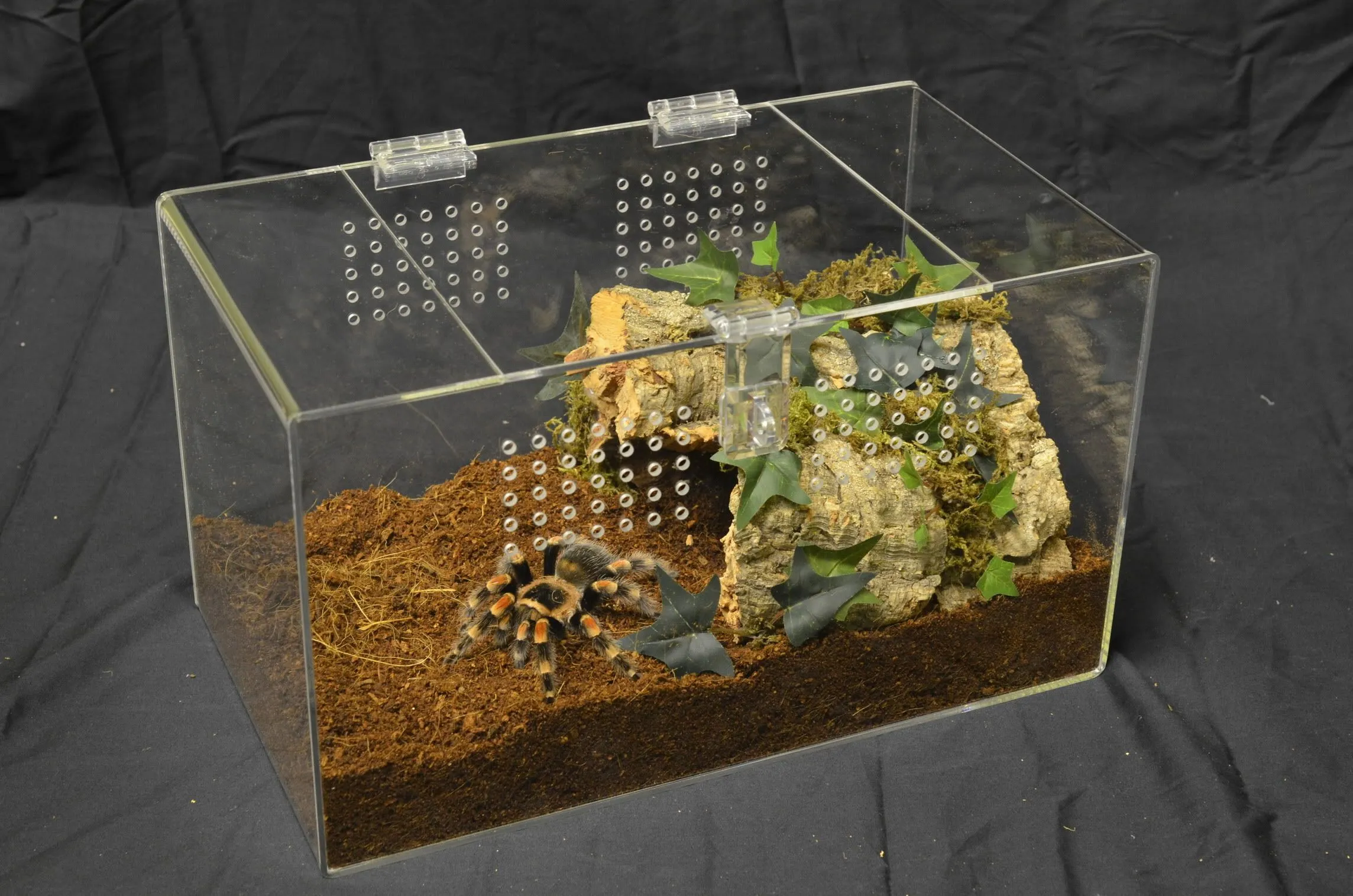
Different tarantula species have varying needs. Terrestrial species, which live on the ground, require more floor space and a deep layer of substrate for burrowing. Arboreal species, on the other hand, need more vertical space, branches, and foliage for climbing. Research the specific requirements of your tarantula species before purchasing an enclosure. Factors such as growth rate, adult size, and natural behaviors will determine the ideal dimensions and features of the enclosure. Understanding their individual needs contributes to a healthy and thriving tarantula.
Impact of Enclosure Size
The size of the enclosure directly impacts the tarantula’s activity level and ability to regulate its environment. A properly sized enclosure promotes natural behaviors like foraging, web-building, and burrowing. Too small enclosures can cause stress, inhibit growth, and may lead to molting problems. Too large enclosures may make it difficult for the tarantula to find its food and may make it feel exposed, leading to excessive hiding. Providing the right space, carefully tailored to the specific species, is essential for the tarantula’s overall health and well-being, enabling it to thrive.
Material Matters in Tarantula Habitats
The material of your tarantula enclosure significantly impacts its functionality, durability, and aesthetic appeal. The choice of material affects ventilation, visibility, and ease of maintenance. Commonly used materials include glass and acrylic, each possessing unique characteristics. Consider the pros and cons of each material to choose the best option for your needs and the specific requirements of your tarantula species. Ensure the material is non-toxic, safe, and able to withstand the tarantula’s activities. This selection ensures a secure and enriching environment for your pet.
Glass Enclosures
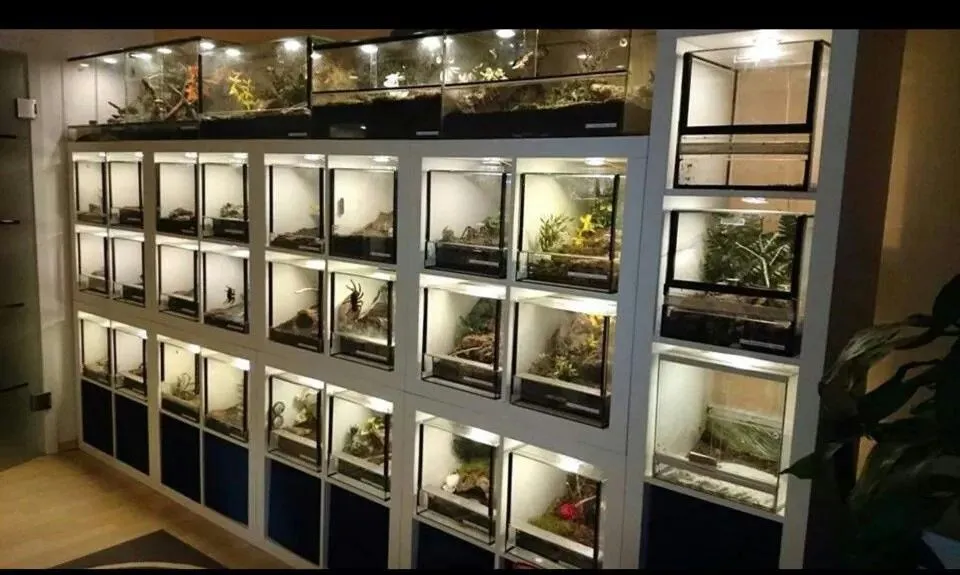
Glass enclosures are a popular choice due to their clarity and durability. Glass provides excellent visibility, allowing you to easily observe your tarantula. They are also relatively easy to clean and sanitize. However, glass enclosures can be heavy, and they may not provide as much ventilation as some other materials. Glass enclosures can also be prone to condensation, which can be mitigated with proper ventilation. Ensuring a secure lid is crucial with glass enclosures to prevent escapes. Carefully consider all factors when selecting a glass enclosure to provide the best habitat for your tarantula.
Acrylic Enclosures
Acrylic enclosures are lightweight, durable, and offer excellent clarity, similar to glass. Acrylic is less prone to breaking than glass, making it a safer option, and they often come with pre-drilled ventilation holes, enhancing airflow. They offer great insulation, helping maintain stable temperatures and humidity levels. Acrylic enclosures may scratch more easily than glass and can be more expensive. The lightweight nature makes them easy to handle and move, offering practicality for keepers. Careful consideration of scratch resistance and cost is essential when choosing acrylic.
Ventilation in Tarantula Enclosures
Proper ventilation is essential for maintaining a healthy environment within your tarantula enclosure. Good ventilation helps to regulate humidity, prevent mold and mildew growth, and ensure fresh air circulation. Inadequate ventilation can lead to respiratory problems and other health issues for your tarantula. The design of the ventilation system plays a critical role in the overall health and wellbeing of your pet. Ventilation allows for the exchange of air, keeping the enclosure free from stale air and harmful build-up.
Why Ventilation is Crucial
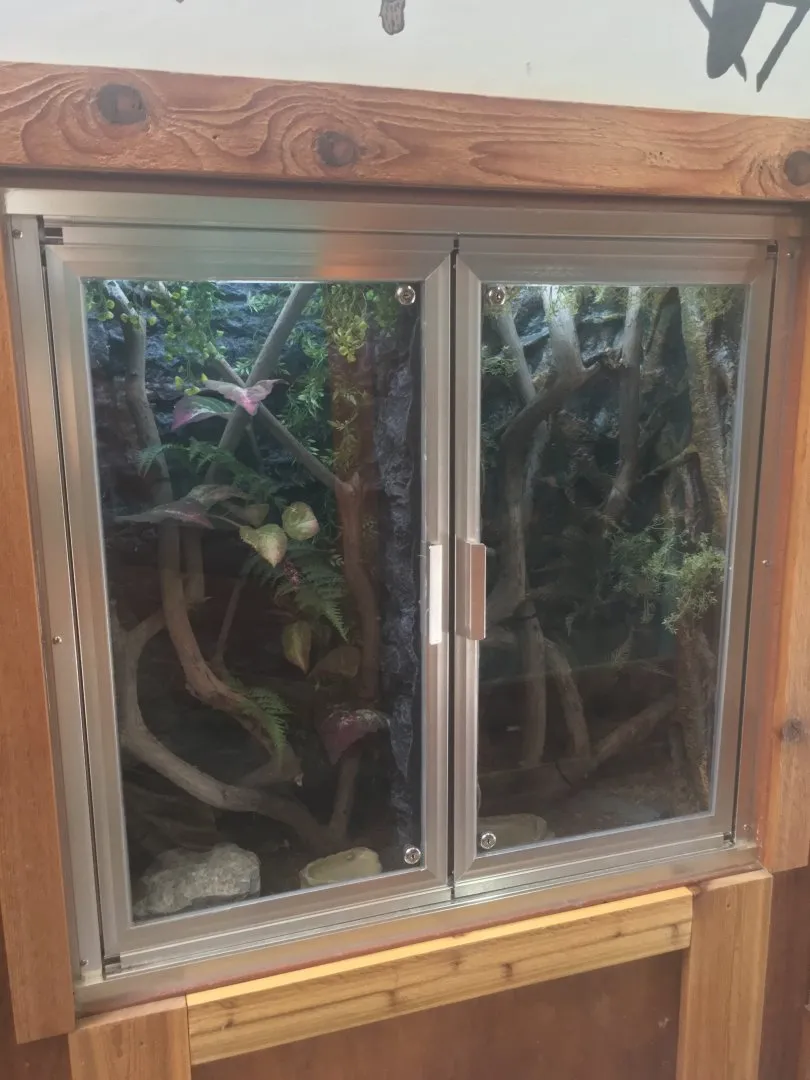
Adequate ventilation prevents the buildup of excess moisture and ammonia, which can lead to fungal infections and respiratory problems. It also helps to control odors and maintain a consistent temperature within the enclosure. Proper ventilation is critical for the tarantula’s ability to breathe and thrive. Stale air and high humidity can be detrimental to the spider’s well-being. A well-ventilated enclosure supports the tarantula’s overall health.
Types of Ventilation Systems
Common ventilation systems include top-vented enclosures and side-vented enclosures. Top-vented enclosures often have mesh lids, which provide good airflow but can lead to excessive moisture loss if not managed correctly. Side-vented enclosures typically have ventilation holes along the sides, which help to maintain humidity while still providing adequate airflow. Selecting the right type of ventilation depends on your tarantula species’ specific needs and the environmental conditions where you live. A balanced approach to ventilation ensures optimal conditions inside the enclosure.
Top 5 Tarantula Enclosure Picks
Enclosure 1
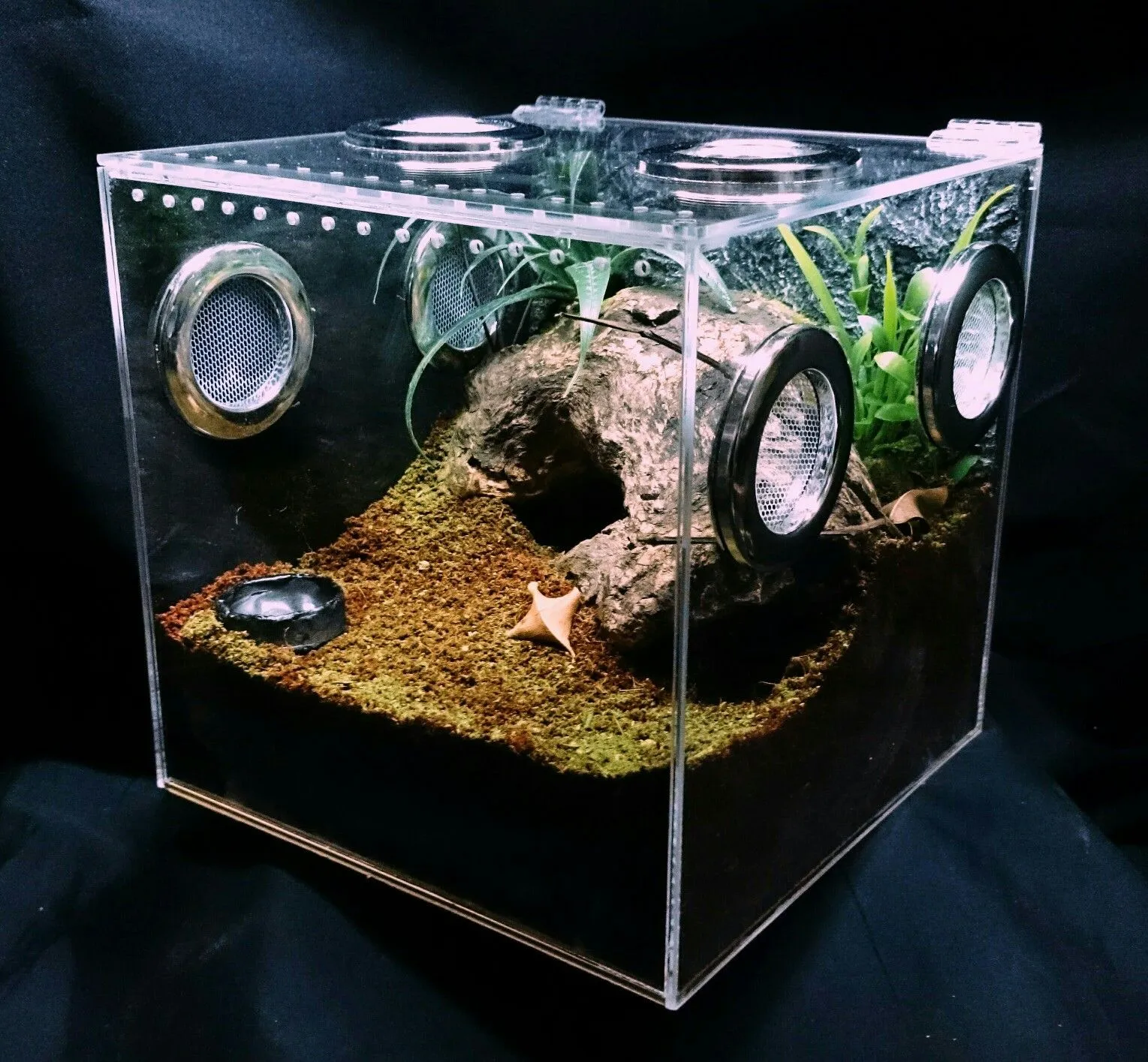
Features
A large, clear acrylic enclosure with a secure locking lid and multiple ventilation holes. Includes a pre-drilled hole for a hygrometer and thermometer. It has a sleek design and is easy to clean.
Pros
Excellent visibility, durable, lightweight, good ventilation.
Cons
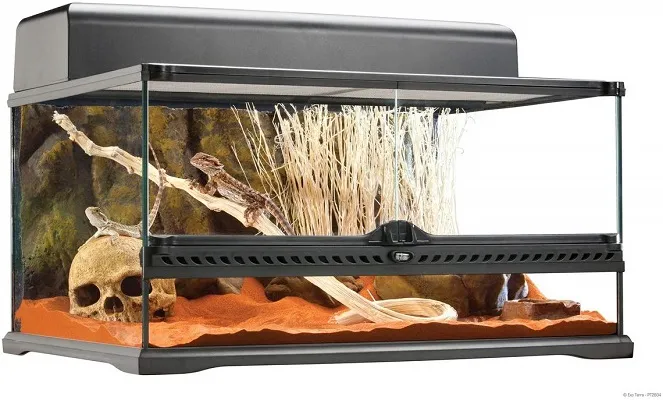
Can scratch easily, potentially expensive.
Enclosure 2
Features
A glass terrarium with a sliding mesh lid and front-opening doors. Features integrated ventilation and a raised base for substrate depth. Includes a secure locking mechanism.
Pros
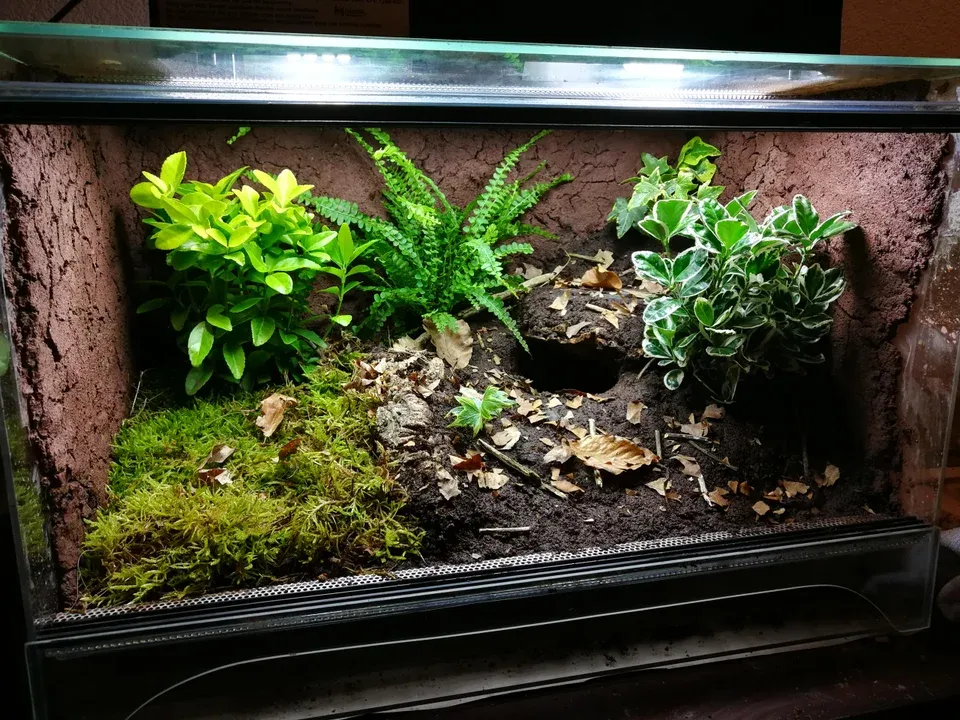
Provides excellent visibility, easy access for feeding and cleaning, secure.
Cons
Heavy, may require additional ventilation, potential for condensation.
Enclosure 3
Features
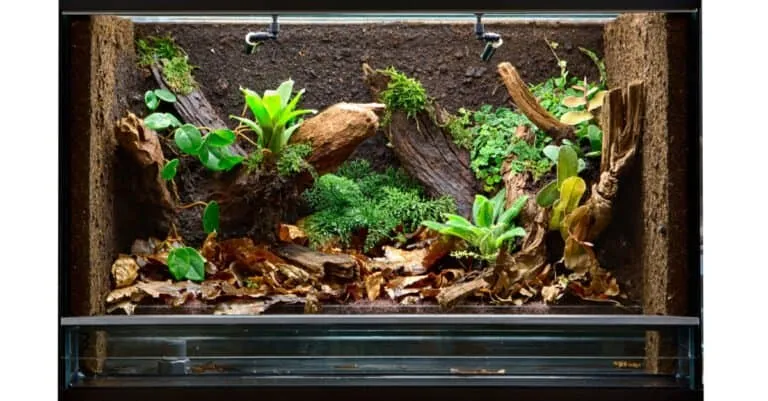
A plastic enclosure with a hinged lid and built-in ventilation slits. Lightweight and affordable. The design is simple, and easy to maintain. Provides a basic but functional habitat.
Pros
Affordable, lightweight, good ventilation.
Cons
Less visibility, less durable, may not be suitable for all species.
Enclosure 4
Features
A custom-built enclosure with specific dimensions and features tailored to your tarantula’s species. High-quality materials and superior craftsmanship. Includes custom ventilation and design elements.
Pros
Perfectly suited to your tarantula’s needs, high quality, aesthetically pleasing.
Cons
Expensive, requires research and planning.
Enclosure 5
Features
A bioactive enclosure setup, featuring a naturalistic environment with live plants, beneficial insects, and a drainage layer. This setup aims to create a self-sustaining ecosystem for your tarantula. Provides enrichment for the tarantula.
Pros
Enriches the tarantula’s life, self-sustaining, aesthetically pleasing.
Cons
More complex setup, requires knowledge of bioactive setups, and more maintenance.
Maintaining Your Tarantula Enclosure
Once you’ve chosen the best enclosure, proper maintenance is key to ensure the health and well-being of your tarantula. Regular cleaning, humidity and temperature checks, and substrate management are essential for creating a thriving habitat. Consistent upkeep also helps in preventing the buildup of harmful bacteria and creating an optimal environment for your pet to flourish. Regular maintenance is crucial for a healthy and happy tarantula.
Substrate and its importance
The substrate, or bedding, is a critical component of the tarantula enclosure. It provides a surface for the tarantula to walk on, burrow in, and helps regulate humidity. The choice of substrate depends on the tarantula species, with options ranging from peat moss and coconut fiber to vermiculite and soil mixes. The substrate should be deep enough for burrowing species and should be changed regularly to prevent mold growth and maintain hygiene. The correct substrate contributes to the overall wellbeing and safety of the tarantula.
Cleaning and Maintenance
Regular cleaning of the tarantula enclosure is essential for maintaining a healthy environment. This includes spot-cleaning to remove uneaten food, molted exoskeletons, and any other waste. The frequency of cleaning will depend on the species and size of the enclosure, with more frequent cleanings for smaller enclosures and species that produce more waste. A complete substrate change is typically recommended every few months, or more frequently if needed. This includes a thorough cleaning of the enclosure itself. Regular maintenance is essential to avoid health issues.
Humidity and Temperature Control
Monitoring and controlling humidity and temperature are critical aspects of maintaining a healthy tarantula habitat. The ideal humidity and temperature levels vary depending on the species. Use a hygrometer and thermometer to monitor these parameters. Misting the enclosure, providing a water dish, and regulating airflow can help maintain appropriate humidity levels. Using a heat source such as a heat mat or ceramic heat emitter can help to regulate temperature if needed. Maintaining the right conditions ensures the tarantula’s comfort and health.
In conclusion, choosing the best tarantula enclosure involves careful consideration of size, material, and ventilation. The top 5 picks highlighted offer a variety of options to suit different tarantula species and keeper preferences. By following these guidelines and prioritizing regular maintenance, you can create a thriving habitat where your tarantula can live a long and healthy life. Proper enclosure setup and maintenance are key to ensuring your tarantula’s well-being and allowing you to enjoy observing these fascinating creatures.
